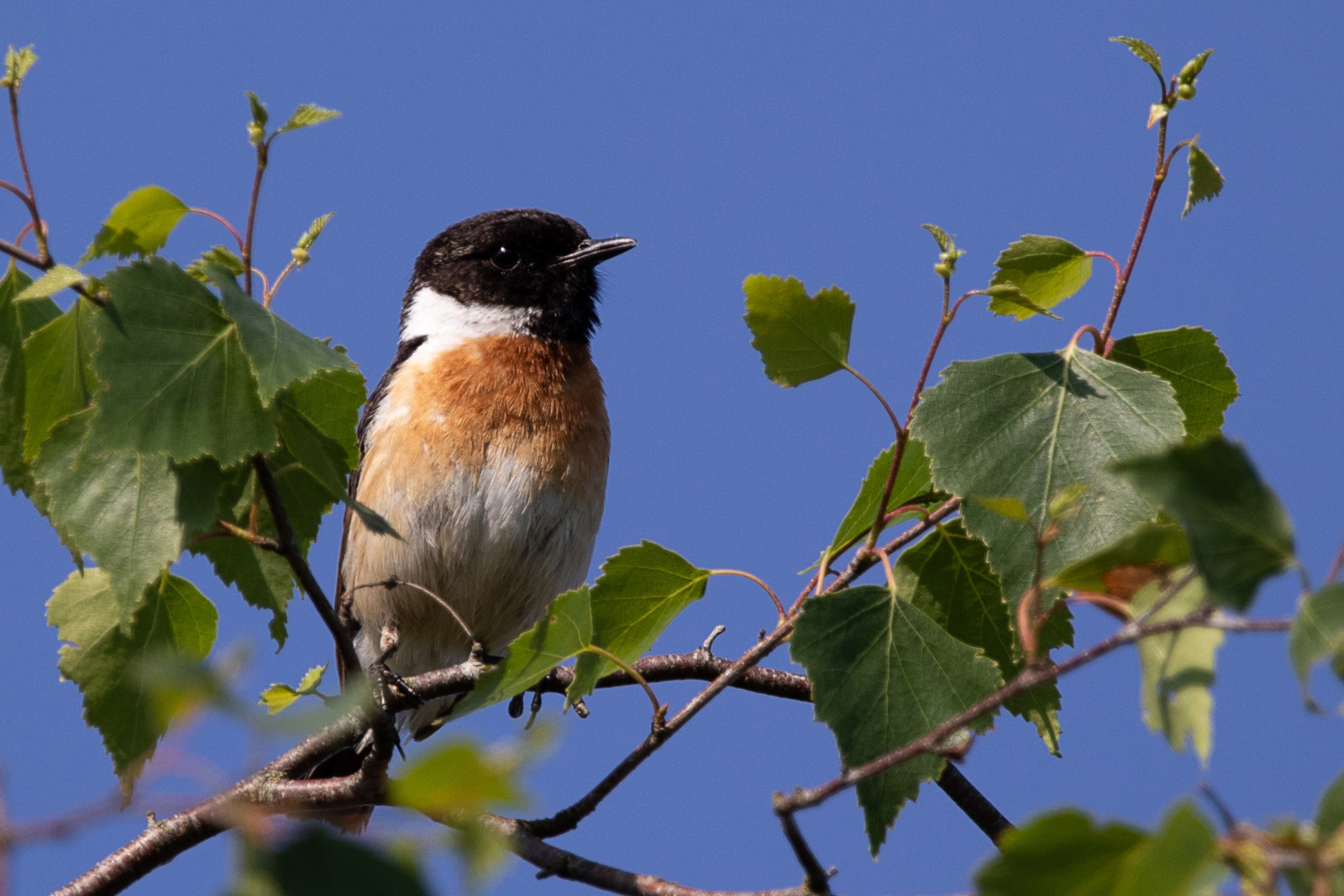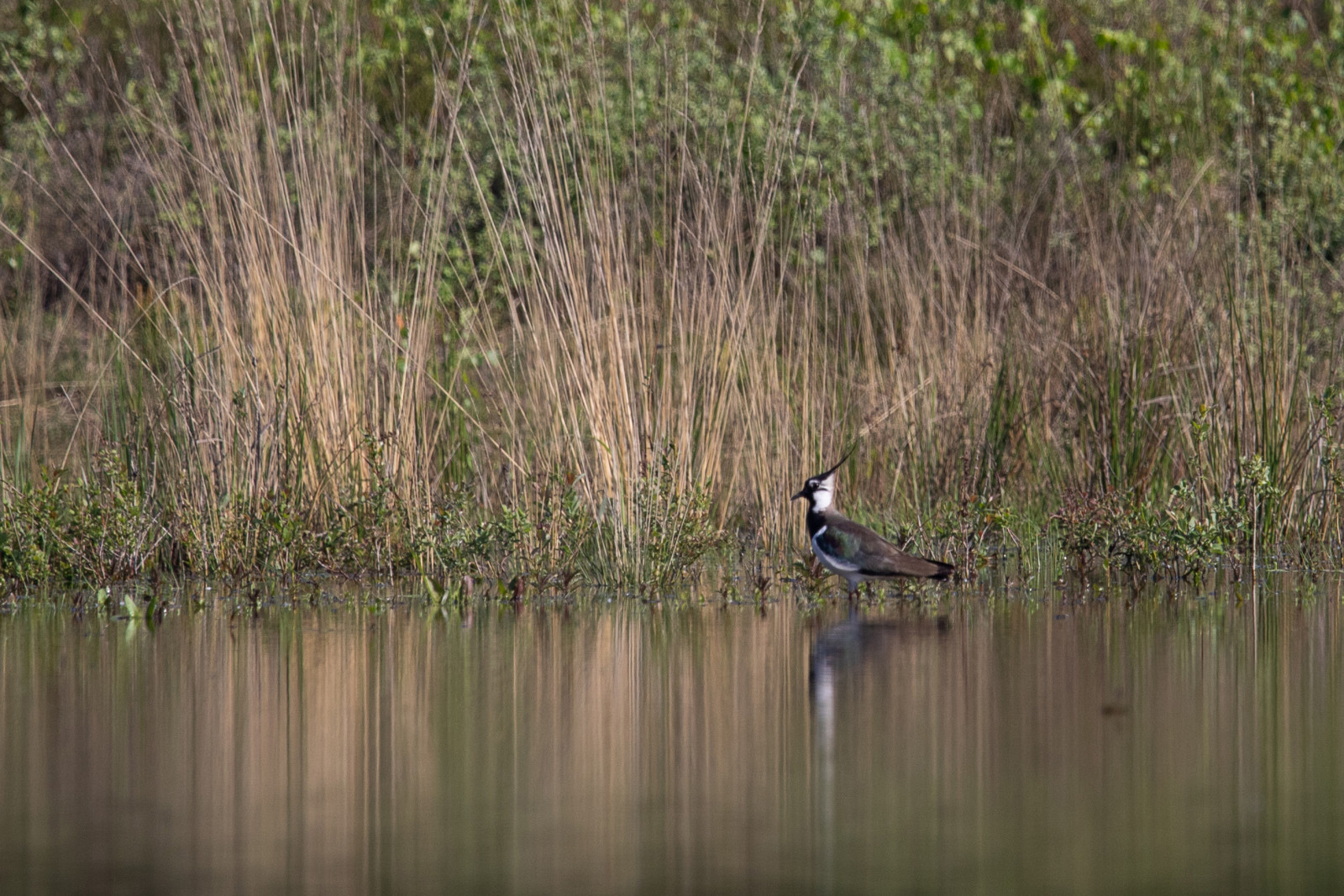Description
The Reindersmeer is located in the northern part of the Province of Limburg and lies between the Maas river to the West and the German border to the East. The area consists of two old sand extraction pits which, nowadays, are connected by water. A walking trails leads you around both pits and the landscape varies from heathland to deciduous forests and sand dunes.
The lake doesn't often provide large numbers of waterbirds, but the species that can be observed here are great! Small numbers of potápka černokrká can be seen mainly in the northwestern part of the lake, sometimes even in summer plumage. In the center of the lakes, hohol severní can be seen diving for food. Other diving ducks, like polák velký en polák chocholačka can be seen in fairly large numbers sometimes. potápka malá can be seen near the shoreline. The area is often visited by scarcer species of waterbird, like turpan černý, zrzohlávka rudozobá, polák kaholka, hoholka lední and morčák malý.
During migration, the lake also attracts rare migrating species, like racek malý, rybák černý, rybák bělokřídlý and rybák bahenní. Several small islands are located near the shore and are mostly covered in reedbeds and small bushes. These islands are home to many species of reedbirds, like slavík modráček, strnad rákosní and rákosník obecný. sedmihlásek hajní and slavík obecný can be heard from the bushes as well. The small heathlands and adjacent deciduous forests provide a great habitat for species, like bramborníček černohlavý, bramborníček hnědý, skřivan lesní and, in winter, ťuhýk šedý. The forests are great for many species of songbird and woodpeckers, like hýl obecný, sýkora parukářka and datel černý.
_________________________
Nederlands: Het Reindersmeer is een groot meer gelegen tussen de Maas en de Duitse grens en biedt een ideaal leefgebied voor vele vogelsoorten. Het gebied bestaat uit twee oude zandwinputten die tegenwoordig door water met elkaar zijn verbonden. Een wandelpad leidt je rond beide putten en het landschap varieert van heide tot loofbossen en zandduinen.
Het meer levert niet vaak grote aantallen watervogels op, maar de soorten die hier te zien zijn zijn geweldig! Kleine aantallen potápka černokrká zijn vooral te zien in het noordwestelijke deel van het meer, soms zelfs in zomerkleed. In het midden van de meren kun je hohol severní zien duiken naar voedsel. Andere duikeenden, zoals polák velký en polák chocholačka, zijn soms in vrij grote aantallen te zien. potápka malá is te zien nabij de oevers. Het gebied wordt vaak bezocht door zeldzamere watervogelsoorten, zoals turpan černý, zrzohlávka rudozobá, polák kaholka, hoholka lední en morčák malý.
Tijdens de trek trekt het meer ook zeldzame migrerende soorten aan, zoals racek malý, rybák černý, rybák bělokřídlý en rybák bahenní. Verschillende kleine eilanden liggen dichtbij de oevers en zijn meestal bedekt met rietvelden en kleine struiken. Deze eilanden herbergen vele soorten rietvogels, zoals slavík modráček, strnad rákosní en rákosník obecný. sedmihlásek hajní en slavík obecný zijn ook te horen vanuit de struiken. De kleine heidevelden en aangrenzende loofbossen bieden een habitat voor soorten als bramborníček černohlavý, bramborníček hnědý, skřivan lesní en, in de winter, ťuhýk šedý. De bossen zijn geweldig voor vele soorten zangvogels en spechten, zoals hýl obecný, sýkora parukářka en datel černý.
Details
Access
The area is easy accessable from the parking lot near the visitors center. You can walk around both lakes or take the shortcut about halfway by taking the small raft.
_________________________
Nederlands: Het gebied is gemakkelijk te bereiken vanaf de parkeerplaats bij het bezoekerscentrum. Je kunt rond beide meren lopen of halverwege de kortere weg nemen door het kleine vlot te nemen.



